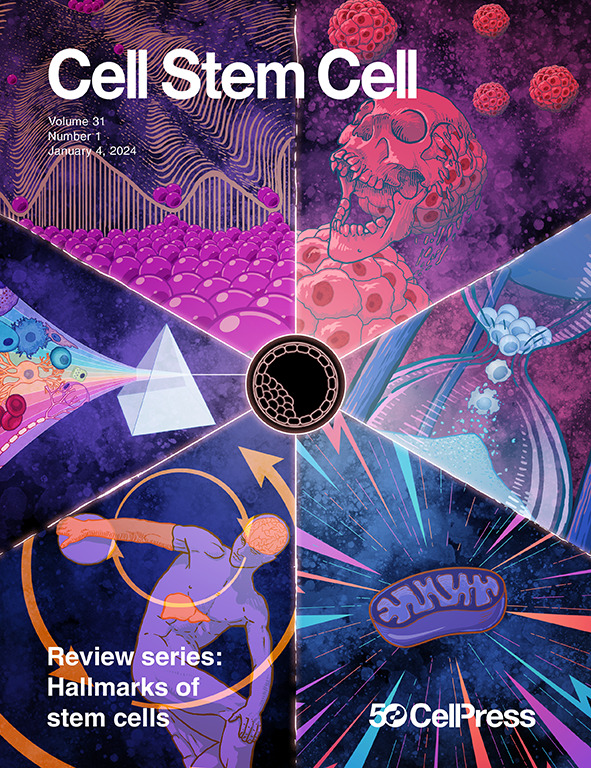Intestinal secretory differentiation reflects niche-driven phenotypic and epigenetic plasticity of a common signal-responsive terminal cell
IF 19.8
1区 医学
Q1 CELL & TISSUE ENGINEERING
引用次数: 0
Abstract
Enterocytes and four classic secretory cell types derive from intestinal epithelial stem cells. Based on morphology, location, and canonical markers, goblet and Paneth cells are considered distinct secretory types. Here, we report high overlap in their transcripts and sites of accessible chromatin, in marked contrast to those of their enteroendocrine or tuft cell siblings. Mouse and human goblet and Paneth cells express extraordinary fractions of few antimicrobial genes, which reflect specific responses to local niches. Wnt signaling retains some ATOH1+ secretory cells in crypt bottoms, where the absence of BMP signaling potently induces Paneth features. Cells that migrate away from crypt bottoms encounter BMPs and thereby acquire goblet properties. These phenotypes and underlying accessible cis-elements interconvert in post-mitotic cells. Thus, goblet and Paneth properties represent alternative phenotypic manifestations of a common signal-responsive terminal cell type. These findings reveal exquisite niche-dependent cell plasticity and cis-regulatory dynamics in likely response to antimicrobial needs.

肠道分泌分化反映了一个共同的信号响应终端细胞的生态位驱动的表型和表观遗传可塑性
肠细胞和四种典型的分泌细胞类型源自肠上皮干细胞。根据形态、位置和典型标记,鹅口疮细胞和Paneth细胞被认为是不同的分泌类型。在这里,我们报告了它们的转录本和染色质可访问位点的高度重叠,这与其肠内分泌细胞或簇细胞的同胞形成了鲜明对比。小鼠和人类的鹅口疮细胞和Paneth细胞表达极少数抗微生物基因的特殊部分,这反映了它们对局部生态位的特殊反应。Wnt 信号将一些 ATOH1+ 分泌细胞保留在隐窝底部,而在隐窝底部,BMP 信号的缺失可有效诱导 Paneth 特征。从隐窝底部移出的细胞会遇到 BMP,从而获得上睑下垂特征。这些表型和潜在的可访问顺式元件在后有丝分裂期细胞中相互转换。因此,鹅口疮和Paneth特性代表了一种共同的信号反应终端细胞类型的替代表型表现。这些发现揭示了依赖于生态位的细胞可塑性和顺式调控动态,可能是对抗菌需求的反应。
本文章由计算机程序翻译,如有差异,请以英文原文为准。
求助全文
约1分钟内获得全文
求助全文
来源期刊

Cell stem cell
生物-细胞生物学
CiteScore
37.10
自引率
2.50%
发文量
151
审稿时长
42 days
期刊介绍:
Cell Stem Cell is a comprehensive journal covering the entire spectrum of stem cell biology. It encompasses various topics, including embryonic stem cells, pluripotency, germline stem cells, tissue-specific stem cells, differentiation, epigenetics, genomics, cancer stem cells, stem cell niches, disease models, nuclear transfer technology, bioengineering, drug discovery, in vivo imaging, therapeutic applications, regenerative medicine, clinical insights, research policies, ethical considerations, and technical innovations. The journal welcomes studies from any model system providing insights into stem cell biology, with a focus on human stem cells. It publishes research reports of significant importance, along with review and analysis articles covering diverse aspects of stem cell research.
 求助内容:
求助内容: 应助结果提醒方式:
应助结果提醒方式:


